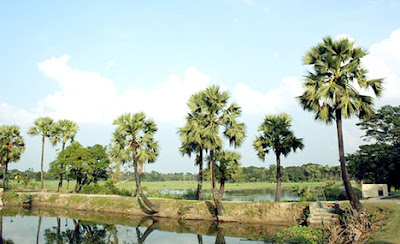Jasmine/Arabian jasmine flowers and leaves (Beli ful o pata)
Another variant of jasmine/Arabian jasmine flower (Beli ful)
Another variant of jasmine/Arabian jasmine flower (Beli ful)
Bud of a jasmine/Arabian jasmine flower (Beli fuler kuri)
Yielding bud of a jasmine/Arabian jasmine flower (Beli ful kuri)
Jasminum sambac - Jasmine/Arabian jasmine flower (Beli ful)
Another variant of jasmine/Arabian jasmine flower (Beli ful)
Jasmine/Arabian jasmine flower (Beli ful)
Jasmine/Arabian jasmine flower (Beli ful)
Jasmine/Arabian jasmine flower's buds (Beli fuler kuri)
Bangladeshi girls with jasmine flowers garlands as part of
their hair decoration (Beli fuler mala)
Bangladeshi girls with jasmine flowers garlands as part of
their hair decoration (Beli fuler mala)
| A blond woman with jasmine flowers garlands(Beli fuler mala) |
Garland of jasmine/Arabian jasmine (Beli fuler mala)
Threading wreath with jasmine flower(Beli fuler mala gatha)
Garlands of jasmine/Arabian jasmine flowers ready to sell in a market
Jasmine flower is commonly known as Beli ful in Bangladesh. In English this flower is also widely known as ''Arabian jasmine''. Scientific name of jasmine/Arabian jasmine flower (Beli ful) is Jasminum sambac. It belongs to the family Oleaceae and specis is J.sambac. Jasmine/Arabian jasmine flower (Beli ful) is the national flower of Philippine and Indonesia.
Jasmine/Arabian jasmine flower(Beli ful) is native to South and South East Asia, that is Bangladesh and eastern part of India. This flower is widely grown throughout the tropical areas from the Arabian peninsula to South East Asia and the Pacific Ocean region.
Jasmine/Arabian jasmine(Beli ful) has been cultivated for thousand of years not only for the beauty of its small,white, star like flowers, but it has also been prized for its intoxicating scent.
This flower plant is a small shrub or vine growing upto 0,5 to 3 meter in height. The leaves of the jasmine/Arabian jasmine flower(Beli ful) plant are ovate, 4 to 12,5 cm long and 2 to 7,5 cm wide. The flowers bloom all through out the year and are produced in clusters of 3 to 12 together at the ends of branches. They are strongly scented, with a white corolla 2 to 3 cm in diameter with 5 to 9 lobes.The flowers open at night, usually around 6 to 8 in the evening and close in the morning. Infact, jasmine/Arabian jasmine flower(Beli ful) is widely cultivated for their attractive and sweetly fragrant flowers. Tipically, the flowers are harvested as buds during early morning. The flowers are used for perfumes and for making tea. The Hindu and the Buddist offer this flower to their goddes and to the Buddha.
There are numerous cultivars of Jasminum sambac which differ from each other by the shape of leaves and the structure of the corolla. There are at least 20 to 30 different varieties of jasmine plant. Only a few varieties reproduce by seed in the wild. Other wise, generally cultivated Jasminum sambac do not bear seeds and the plant is reproduced solely by cuttings, layering, marcotting and other methodsof asexual propagation.
Jasmine/Arabian jasmine flower(Beli ful) is one of the most important flower in wedding ceremonies for Indian, Bangladeshi people and also for Indonesians, especially in the Java island. In Bangladesh and India women use the flowers in their hair for their beautiful fragrance.
S: en.wikipedia.org; care2.com(jasmine,indian flower);toptropicals.com; floridata.com;
Read also: White water lily or Sada Shapla is the national flower of Bangladesh
Kadam/Kadambo is a rainy season flower in Bangladesh
Water hyacinth (Kochuripana) beauty and death
Silk Cotton tree - Shimul ful/Shimul Tular Gash








